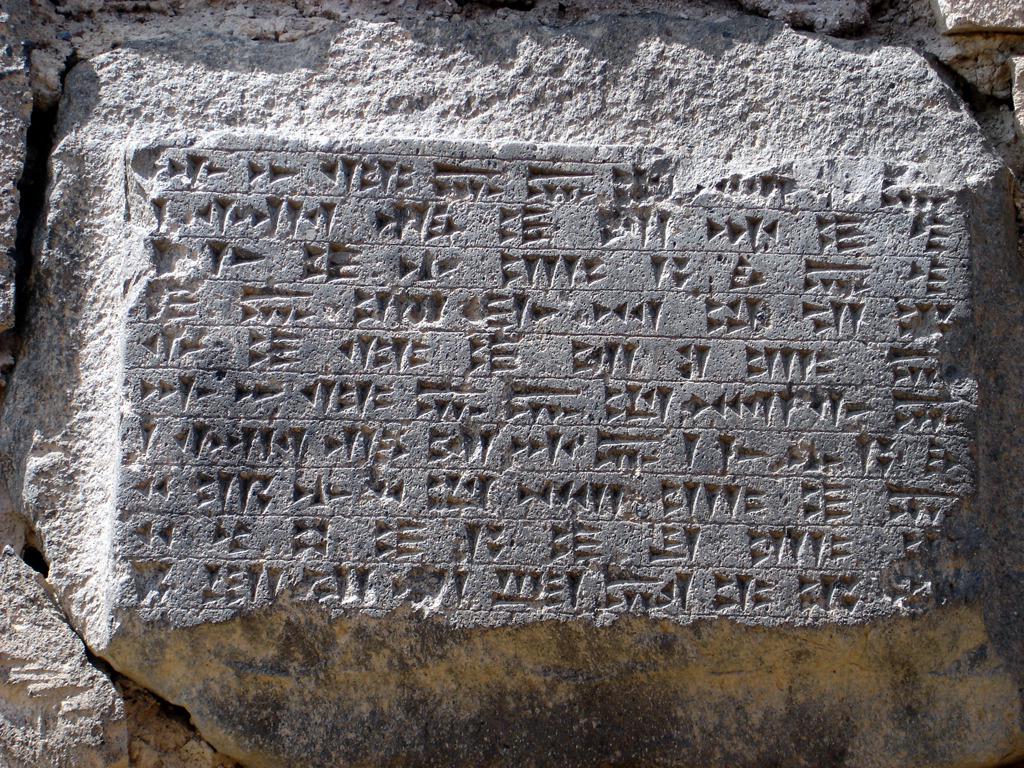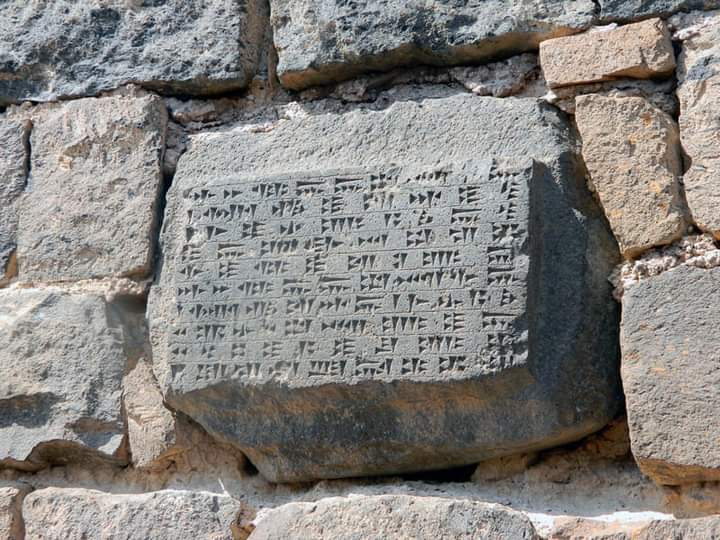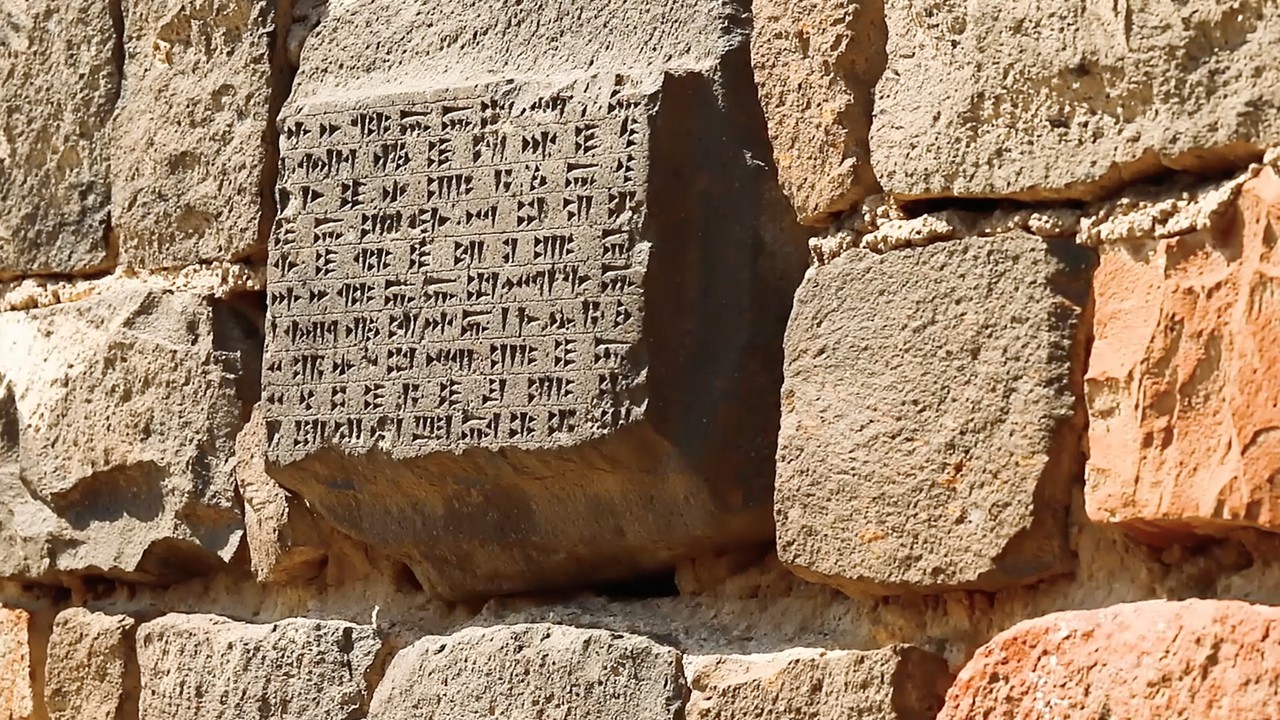Introduction
As the capital and largest city of Armenia, Yerevan holds a special place in the heart of the Armenian people. But did you know that the origins of this vibrant metropolis can be traced back over 2,800 years? The “birth certificate” of Yerevan, or more accurately its ancient predecessor Erebuni, is a remarkable cuneiform inscription discovered at the Erebuni Fortress. This ancient stone slab, carved on basalt, provides a fascinating glimpse into the founding of this historic city.

In this blog post, we’ll delve into the story behind this remarkable archaeological find, exploring the significance of the Erebuni inscription and what it reveals about the origins of Armenia’s capital. We’ll examine the translation of the inscription, unpack its key details, and understand the broader historical context that gave rise to the establishment of this ancient fortress city. So join me on a journey back in time as we uncover the remarkable story of Erebuni – the “birth certificate” of modern-day Yerevan.
The Discovery of the Erebuni Inscription
The Erebuni Fortress, located in what is now the heart of Yerevan, has long been recognized as one of the most important archaeological sites in Armenia. Constructed in 782 BC under the orders of King Argishti I of the Kingdom of Urartu, the fortress was a strategic stronghold that served as the capital of the Urartian province of Erebuni.
It was during excavations of the Erebuni Fortress in the 1950s that archaeologists made a remarkable discovery – a basalt stone slab inscribed with cuneiform script. This inscription, now known as the “birth certificate” of Yerevan, provided a first-hand account of the founding of the ancient city of Erebuni by King Argishti I.
The inscription, which is now preserved in the Erebuni Museum in Yerevan, has been the subject of intense study and analysis by historians and linguists. Its translation has shed invaluable light on the origins of Armenia’s capital city, as well as the broader history and culture of the Urartian Kingdom.
Deciphering the Erebuni Inscription
The Erebuni inscription is written in the Urartian cuneiform script, a writing system that was widely used throughout the ancient Kingdom of Urartu. The text is carved onto a large basalt stone slab, measuring approximately 1.5 meters in height and 1 meter in width.
The inscription begins with a declaration by King Argishti I, the son of Menua, who states that he built the “inaccessible fortress” of Erebuni “for the power of Biaina country and to the horror of enemy countries.” This suggests that the fortress was constructed as a strategic military outpost, designed to project Urartian power and deter potential rivals.

The text then goes on to describe the state of the land prior to the construction of the fortress, noting that it was “deserted” and “there was nothing built.” This implies that the site of Erebuni was chosen for its strategic location, rather than an existing settlement.
One of the most intriguing details in the inscription is the mention of 6,600 soldiers who were “resettled from Khale and Tsupane countries” to the new fortress. This suggests that the establishment of Erebuni was part of a broader program of military expansion and population relocation undertaken by the Urartian Kingdom.
The inscription concludes with a declaration of the power and accomplishments of King Argishti I, who states that he “did powerful feats here.” This grandiose language is typical of Urartian royal inscriptions, which often sought to glorify the achievements of the ruling monarch.
The Significance of the Erebuni Inscription
The Erebuni inscription holds immense significance for our understanding of the history and origins of Yerevan, as well as the broader context of the Urartian Kingdom. Here are some of the key insights it provides:
The Founding of Erebuni
The inscription directly states that the city of Erebuni was founded in 782 BC by King Argishti I of Urartu. This makes Erebuni one of the oldest continuously inhabited cities in the world, predating the establishment of many other ancient metropolises.
The Urartian Kingdom
The inscription provides valuable information about the Urartian Kingdom, a powerful ancient civilization that dominated the region for centuries. It reveals details about Urartian military strategy, population management, and the role of the monarchy in shaping the built environment.
The Origins of Yerevan
While the modern city of Yerevan was not officially founded until the 1st century AD, the Erebuni inscription demonstrates that the site of the current capital has been strategically important for over 2,800 years. This provides important historical context for understanding the development and growth of Yerevan over the centuries.
Cultural Continuity
The fact that the Erebuni inscription has been preserved and studied by scholars over the centuries is a testament to the enduring cultural legacy of Armenia. It represents a tangible link between the ancient Urartian civilization and the modern Armenian state, underscoring the deep roots of Armenian identity and heritage.
The Broader Historical Context
The establishment of the Erebuni Fortress in 782 BC must be understood within the broader historical context of the ancient Near East. At this time, the Kingdom of Urartu was a powerful regional power, rivaling the mighty Assyrian Empire to the west and the Achaemenid Persian Empire to the east.
The Urartian Kingdom, centered in the region of modern-day Armenia, had emerged as a major political and military force in the 9th century BC. Under a series of ambitious and expansionist kings, Urartu grew into a formidable empire, controlling a vast territory that stretched from the Caucasus Mountains to the shores of Lake Van.

The construction of the Erebuni Fortress was part of a broader Urartian strategy to consolidate control over the strategic South Caucasus region. By establishing a fortified city at the site of modern-day Yerevan, Argishti I sought to project Urartian power, deter potential rivals, and facilitate the movement of troops and resources throughout the kingdom.
The inscription itself reflects the grandiose ambitions and militaristic orientation of the Urartian state. The language used by Argishti I, with its references to “powerful feats” and “the horror of enemy countries,” underscores the Urartians’ self-perception as a dominant regional power.
At the same time, the inscription also reveals the Urartians’ pragmatic approach to governance and population management. The relocation of thousands of soldiers to Erebuni suggests a deliberate strategy of demographic engineering, aimed at securing the loyalty of the fortress city’s inhabitants and ensuring its long-term viability.
The Legacy of Erebuni
The Erebuni inscription has endured as a remarkable testament to the ancient history and cultural heritage of Armenia. Despite the many political and social upheavals that have shaped the region over the centuries, this cuneiform inscription has remained a tangible link to the past, providing invaluable insights into the origins of Yerevan and the broader Urartian civilization.

Today, the Erebuni Fortress and its associated museum in Yerevan have become important cultural landmarks, attracting visitors from around the world who come to learn about this remarkable chapter in Armenian history. The inscription itself is a centerpiece of the museum’s collection, allowing visitors to directly engage with the ancient roots of the Armenian capital.
Beyond its historical significance, the Erebuni inscription also holds important symbolic value for the Armenian people. It represents a tangible connection to the ancient past, underscoring the enduring resilience and cultural continuity of the Armenian nation. In a sense, the “birth certificate” of Yerevan has become a source of national pride, a testament to the deep-rooted history and identity of Armenia.
Conclusion
The Erebuni inscription, carved into a basalt stone slab over 2,800 years ago, stands as a remarkable testament to the ancient origins of Yerevan, the capital of Armenia. This cuneiform text, left by King Argishti I of the Urartian Kingdom, provides a first-hand account of the founding of the Erebuni Fortress in 782 BC, shedding invaluable light on the strategic and demographic considerations that shaped the establishment of this ancient city.
Through the translation and analysis of this inscription, we gain a deeper understanding of the Urartian Kingdom, its military ambitions, and its approach to governance and population management. The Erebuni inscription also underscores the enduring cultural legacy of Armenia, representing a tangible link between the ancient past and the modern nation.
As Yerevan continues to evolve and grow, the Erebuni inscription remains a powerful symbol of the city’s rich history and the resilience of the Armenian people. This “birth certificate” of the capital serves as a constant reminder of the deep roots that underpin the vibrant, dynamic city we know today.

